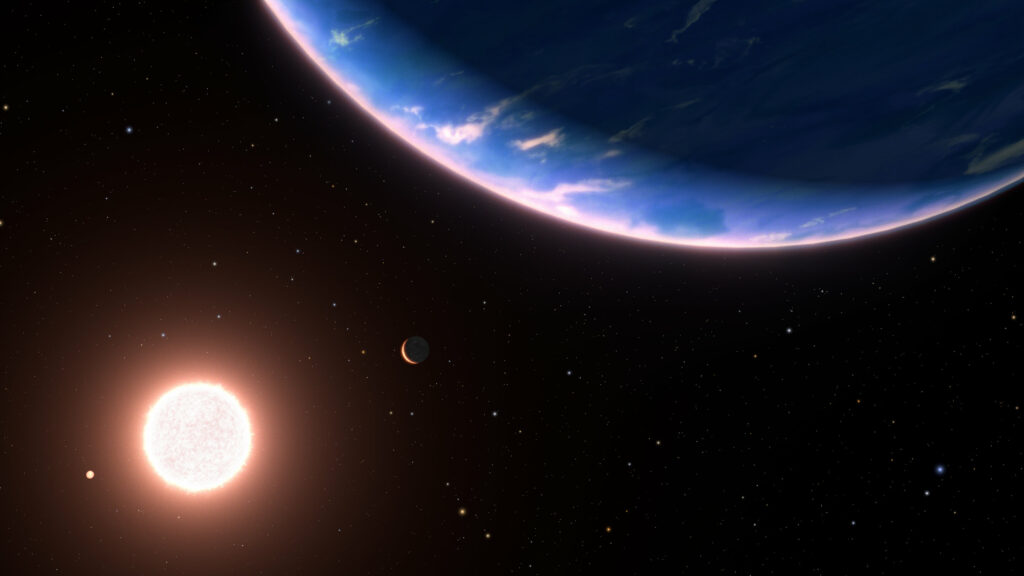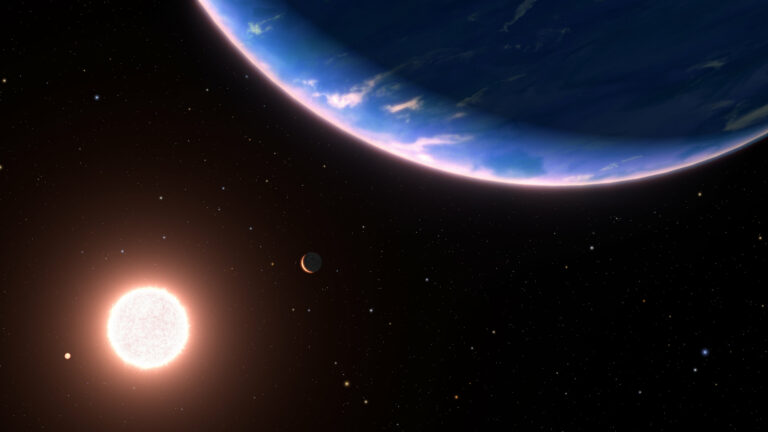Hubble Discovers Water Vapor in the Atmosphere of a Compact Exoplanet
The NASA/ESA Hubble Space Telescope has made an intriguing discovery, observing the smallest exoplanet with water vapor in its atmosphere. This exoplanet, known as GJ 9827d, is approximately twice the size of Earth and could potentially represent other planets in our galaxy that have water-rich atmospheres.
GJ 9827d was initially detected by NASA’s Kepler Space Telescope in 2017. It orbits a red dwarf star every 6.2 days and is located 97 light-years away from Earth in the Pisces constellation.
One of the team members, Björn Benneke from the Université de Montréal, expressed the significance of this finding, stating, “This would be the first time that we can directly show through an atmospheric detection that these planets with water-rich atmospheres can actually exist around other stars. This is an important step toward determining the prevalence and diversity of atmospheres on rocky planets.”
The study detailing this discovery has been published in The Astrophysical Journal Letters.

However, it is still too early to determine whether the Hubble Space Telescope’s spectroscopic measurements indicate a small amount of water vapor in a hydrogen-rich atmosphere or if the planet’s atmosphere is primarily composed of water, which may have been left behind after a hydrogen/helium atmosphere dissipated due to stellar radiation.
Pierre-Alexis Roy, the lead author of the paper from the Université de Montréal, explained the purpose of their observing program, stating, “Our observing program was designed specifically with the goal of not only detecting the molecules in the planet’s atmosphere but also specifically searching for water vapor. Regardless of the outcome, whether water vapor dominates or is just a minor component in a hydrogen-dominated atmosphere, both results would be equally exciting.”
This discovery opens up new possibilities for understanding the composition and characteristics of exoplanet atmospheres, shedding light on the prevalence of water-rich planets in our galaxy.
Until this point, the direct detection of the atmosphere of a planet as small as this one had not been possible. According to Benneke, we are gradually entering into this realm now. As we continue to study smaller planets, there will come a time when these small worlds no longer have a hydrogen-dominated atmosphere and instead have atmospheres more similar to Venus, which is primarily composed of carbon dioxide.
Due to the planet’s high temperature, approximately 425°C, if the atmosphere were mostly water vapor, it would undoubtedly be an inhospitable and steamy world.
Currently, the team is considering two possibilities. The planet may still retain a hydrogen-rich envelope mixed with water, resembling a mini-Neptune. Alternatively, it could be a warmer version of Jupiter’s moon Europa, which contains twice as much water as Earth beneath its surface. Benneke suggests that the planet GJ 9827d could consist of equal parts water and rock, with a significant amount of water vapor present on top of a smaller rocky body.
If the planet possesses a residual atmosphere rich in water, it must have formed farther away from its host star, where the temperature is colder and water exists in the form of ice. Subsequently, the planet would have migrated closer to the star, receiving more radiation. As a result, the hydrogen would have been heated and escaped, or is currently in the process of escaping, due to the planet’s weak gravity. Another theory proposes that the planet formed near the hot star, with a small amount of water in its atmosphere.
The Hubble program observed the planet during 11 transits over a span of three years. During these transits, the planet passed in front of its star, allowing starlight to pass through its atmosphere and carry the spectral signature of water molecules. If there are clouds present on the planet, they are situated at a low enough altitude in the atmosphere to not completely obstruct Hubble’s view, enabling the detection of water vapor above the clouds.
Hubble’s finding provides an opportunity to delve deeper into the study of the planet. It presents a favorable subject for the NASA/ESA/CSA James Webb Space Telescope to conduct infrared spectroscopy and explore the presence of additional atmospheric molecules.
This article is republished from PhysORG under a Creative Commons license. Read the original article.
Do not forget to share your opinion with us to provide you with the best posts !




0 Comments